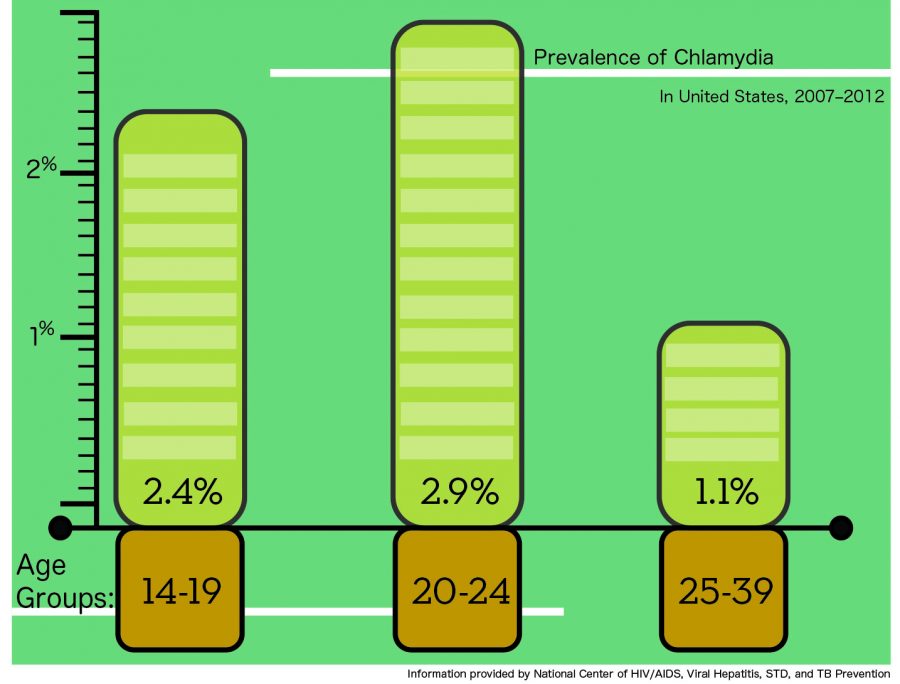Chlamydia infection most common among young people, women
Chlamydia
November 17, 2014
According to the Sept. 26 edition of the Centers for Disease Control and Prevention’s Morbidity and Mortality Weekly Report, an estimated 1.8 million people in the U.S. have chlamydia, with females and young people ages 14–24 being the most affected.
Elizabeth Torrone, author of the report and an epidemiologist at the CDC, said all women younger than 25 should be screened for chlamydia annually.
“It is one of the most common sexually transmitted infections in the U.S.,” Torrone said. “One of the main concerns about chlamydia is that it doesn’t have any symptoms, so most persons who have it don’t know they have it.”
According to the report, the CDC determines chlamydia prevalence in the U.S. by age, gender and other demographic characteristics based on the National Health and Nutrition Examination Survey, which tested a sample of 8,330 U.S. citizens between the ages of 14–39 for chlamydia.
Torrone said the prevalence of chlamydia is measured by testing a sample population for the infection rather than basing data on reported incidence because most infections are asymptomatic and therefore are neither diagnosed nor reported.
The report states that of the sample population tested, the prevalence of chlamydia was 2.4 percent for people ages 14–19, 2.9 percent for people ages 20–24 and 1.1 percent for people ages 25–39, concluding that the disease is more common among adolescents and young adults than people over the age of 25.
There are a number of social factors specific to young people that could be influencing the high number of them infected with chlamydia, according to Heather Eastman-Mueller, a health educator at the University of Missouri and chair of the Sexual Health and Clinical Care Coalition at the American College Health Association.
“I think it’s because adolescents and young adults are experiencing newfound autonomy, and some of them are not living at home,” Eastman-Mueller said. “Their relationship status might not be as stable as somebody who would be older. [There is potential] alcohol or substance abuse, increased hormones, social pressure and media influence, making this a complex issue.”
In terms of gender, women are more commonly infected with chlamydia than men, with the infection’s prevalence among women at 2 percent and its prevalence among men at 1.4 percent, according to the report.
According to Torrone, young women are more prone to chlamydia infections due to a biological factor known as cervical ectopy—a condition in which the cells of the inside of the cervix are still on the outside, making them more susceptible to becoming infected—which is commonly seen among younger women but goes away as their bodies mature.
Sondra Summers, division director of Obstetrics and Gynecology at the University of Illinois College of Medicine at Chicago, said chlamydia can cause fertility problems, pelvic pain, complications during pregnancy and infections in newborns. She also said that regular screenings are important to limit the number of women with chlamydia.
Summers said that because chlamydia can often have no symptoms, testing for the STI can sometimes be the only way to detect infection.
“It’s actually very easy to treat chlamydia,” Summers said. “It’s one antibiotic and we can give it to them in a one-time dose. Sometimes we try different tricks to help with compliance, so we can have the patients come in and take it in front of us or have them come back in three to four weeks to make sure the infection is gone.”








